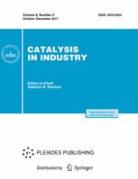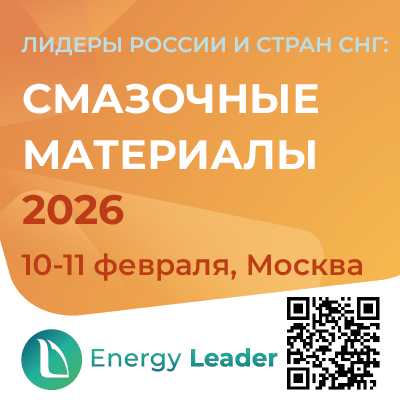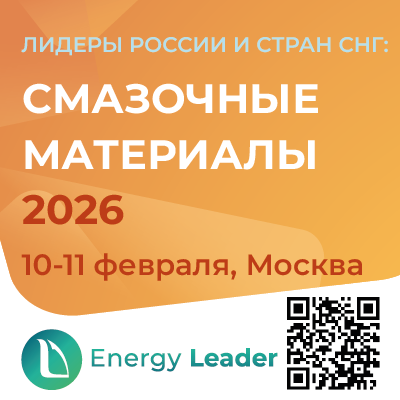Li2Cu2(MoO4)3/TiO2 + SiO2/Ti composition for the diesel soot catalytic afterburning
Abstract
Catalytically active oxide layer on the titanium surface to form a catalytic afterburner Diesel soot coating was first formed by two methods: plasma-electrochemical production of the oxide film on titanium and extraction-pyrolytic coating compound Li2Cu2(MoO4)3. Catalytic compositions Li2Cu2(MoO4)3/TiO2 + SiO2/Ti, received by single extraction pyrolytic treatment of oxidized titanium surface provides high speed of combustion soot from ~ 300 °C. The subsequent covering of Li2Cu2(MoO4)3 leads to a decrease of catalyst activity, which may be due to the growth of crystallites molybdate phase and filling the open pores of the oxide film. Double molybdate of lithium and copper has the ability to significantly reduce the CO yield in the products of soot oxidation. The advantages of these techniques are: the possibility of forming a high adhesion resistant coatings on the any complexity surfaces, ease of hardware implementation, high productivity and low cost of processes. The obtained results are recommended to be used in developing of forming composite coatings methods for catalytic soot filters.
About the Authors
N. V. LebukhovaRussian Federation
V. S. Rudnev
Russian Federation
P. G. Chigrin
Russian Federation
K. S. Makarevich
Russian Federation
I. V. Lukiyanchuk
Russian Federation
N. F. Karpovich
Russian Federation
References
1. Руднев В.С. Многофазные анодные слои и перспективы их применения // Защита металлов. 2008. Т. 44. № 3. С. 283.
2. Холькин А.И., Патрушева Т.Н. Экстракционно-пиролитический метод. Получение функциональных оксидных материалов. М.: КомКнига, 2006.
3. Machida M., Murato Y., Kishikawa K., Ikeue K. On the reasons for high activiti of CeO2 catalyst for soot oxidation // Chem. of mater. 2008. Vol. 20. № 13. P. 4489.
4. Hasan M.A., Zaki M.I., Kumari, K. Pasupulety L. Soot deep oxidation by molibdena and molibdates: a thermogravimetic investigation // Thermochim. Acta. 1998. Vol. 320. P. 23.
5. Pruvost C., Lamonier J.F., Courcot D. et al. Effect of copper addition on the activity and selectivity of oxide catalysts in the combustion of carbon particulate // Stud. in Sur. Sci. and Cat. 2000. Vol. 130. P. 2159.
6. Craenenbroeck J. V., Andreeva D., Tabakova T. et al. Spectroscopic Analysis of Au–V-Based Catalysts and Their Activity in the Catalytic Removal of Diesel Soot Particulates // J. of Cat. 2002. Vol. 209. P. 515.
7. Peng X., Lin H., Shangguan W., Huang Z. Physicochemical and Catalytic Properties of La0.8K0.2CuxMn1-xO3 for Simultaneous Removal of NOx and Soot: Effect of Cu Substitution Amount and Calcination Temperature// Ind. Eng. Chem. Res. 2006. Vol. 45. № 26. P. 8822.
8. Ciambelli P., Palma V., Russo P., Vaccaro S. Redox properties of a TiO2 supported Cu-V-K-Cl catalyst in low temperature soot oxidation // J. of Mol. Cat. A: Chemical. 2003. Vol. 204–205. P. 673.
9. Carrascull A.L., Ponzi M.I., Ponzi E.N. Catalytic combustion of soot on KNO3/ZrO catalysts. Effect of potassium nitrate loading on activity // Ind. Eng. Chem. Res. 2003. Vol. 42. № 4. P. 692.
10. Бокова М.Н. Горение сажи в присутствии Сu–Ce–Al–O-катализаторов. Роль озона как активирующего реагента: Автореф. … дис. канд. хим. наук. М. , 2004.
11. Лебухова Н.В., Карпович Н.Ф., Макаревич К.С., Чигрин П.Г. Каталитическое горение сажи в присутствии медно-молибдатных систем, полученных разными методами // Катализ в промышленности. 2008. № 6. С. 35.
12. Jimenez R., Garcia X., Cellier C. et al. Soot combustion with K/MgO as catalyst. II. Effect of K-precursor //Applied Catalysis A: General. 2006. Vol. 314. P. 81.
13. Cauda E., Mescia D., Fino D. et al. Diesel particulate filtration and combustion in a wall-flow trap hosting a LiCrO2 catalyst // Ind. Eng. Chem. Res. 2005. Vol. 44. P. 9549.
14. Gong C., Song C., Pei Y. et al. Synthesis of La0.9K 0.1CoO3 fibers and the catalytic properties for diesel soot removal // Ind. Eng. Chem. Res. 2008. Vol. 47. P. 4374.
15. Sui L., Yu L., Zhang Y. The Effects of Alkaline Earth Metals on Catalytic Activities of K-Sm-Based Catalysts for Diesel Soot Oxidation // Energy & Fuels. 2006. Vol. 20. P. 1392.
16. Peralta M.A., Milt V.G., Cornaglia L.M., Querini C.A. Stability of Ba,K/CeO2 catalyst during diesel soot combustion: Effect of temperature, water, and sulfur dioxide // Journal of Catalysis. 2006. Vol. 242. P. 118.
17. Mul G., Kapteijn F., Moulijn J.A. A drifts study of the interaction of alkali metal oxides with carbonaceous surfaces // Carbon. 1999. Vol. 37. P. 401.
18. Neeft J. P.A., Makkee M., Moulijn J.A. Catalysts for the oxidation of soot from diesel exhaust gases. I. An exploratory study // Appl. Catal. B. 1996. Vol. 8. P. 57.
Review
For citations:
Lebukhova N.V., Rudnev V.S., Chigrin P.G., Makarevich K.S., Lukiyanchuk I.V., Karpovich N.F. Li2Cu2(MoO4)3/TiO2 + SiO2/Ti composition for the diesel soot catalytic afterburning. Kataliz v promyshlennosti. 2011;(2):47-52. (In Russ.)




























